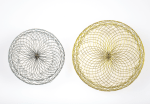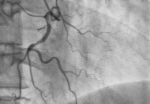Left atrial appendage closure (LAAC) in non-valvular atrial fibrillation with high risk of bleeding has shown promising results with first generation devices (with the Watchman) in the different studies. At present, we have a more modern device, the Watchman FLX, but we do not have much information about it. To gather more data, researchers looked...
Ticagrelor Monotherapy: Valid after 12 Months?
Recent studies on antiplatelet antiaggregation support the use of short dual antiaggregation therapy (DAPT), even in unforeseen scenarios, such as complex PCI. On the contrary, in patients with high ischemic risk, there is still evidence in favor of prolonged antiaggregation, mainly through the DAPT study, which showed lower risk of major ischemic events with DAPT...
TRICVALVE in Patients with Severe Tricuspid Regurgitation: Promising Results at 6 months
Severe tricuspid regurgitation (TR) is associated with high mortality and morbidity. For patients with high surgical risk that cannot get surgery, the endovascular option has become an attractive solution this past decade. Transcatheter intervention has focused on edge-to-edge repair and valve replacement. However, their success depends on anatomical characteristics and imaging guidance effectiveness. The bicaval...
Complicated Non-Stenotic Carotid Plaques: A Light in the Diagnosis of Cryptogenic Stroke?
Stroke is one of the leading causes of death and disability. It produces great morbidity by causing marked post-event cognitive impairment. Recurrence of an ischemic event may vary according to the cause of the stroke. Complicated non-stenotic carotid plaque (CCP) type VI (according to the American Heart Association [AHA] classification) has been described as an...
The Current Role of Thrombus Aspiration in Primary PCI
In general, thrombus aspiration in acute myocardial infarction (AMI) has not been shown beneficial by large studies. It could even be prejudicial, since it has been associated with stroke. However, there are certain scenarios where the presence of a significant number of these prevents us from reaching adequate TIMI flow 3, or is associated with...
TAVR: If Not Transfemoral, We Should Consider Transcaval Access
Transcatheter aortic valve replacement (TAVR) through transfemoral access has already proven its great benefits, but this access cannot be used in certain patients, and alternative accesses need to be considered for such cases. One of the most commonly used accesses is the transaxillary or transubclavian access (AX), which, however, is associated with more complications (especially...
Transfemoral vs Transradial Approach in the Percutaneous Treatment of CTO
Percutaneous treatment of chronic total occlusion (CTO) has traditionally been via the transfemoral approach (TFA). The use of the transradial approach (TRA) in complex coronary interventions has been increasing. A randomized study assessed the use of TRA vs TFA in complex PCI (58% CTO) and TRA saw favorable outcomes. The aim of this prospective, randomized,...
In Multivessel Disease, When Should Renal Impairment Be Considered?
Cardiovascular disease is one of the main causes of morbidity and mortality in patients with advanced chronic kidney disease (CKD), and vice-versa. Both diseases share risk factors, including, but not limited to, diabetes, high blood pressure, smoking, dyslipidemia, and old age. As kidney disease develops, its severity grade has been linked to more thrombotic events...
WOEST 2 | Dual Versus Triple Antithrombotic Scheme in the Real World.
The WOEST study found a significant reduction in bleeding complications post PCI with oral anticoagulation indication (OAC) when treating patients with dual antiplatelet therapy (DAPT) vs. the triple antithrombotic scheme. Several randomized studies have shown these results. At present, the guidelines recommend using the triple antithrombotic scheme in patients according to ischemic and bleeding risk. ...
ACC 2022 | IVVE
This randomized study aimed at assessing the flu vaccine vs placebo in patients with cardiac failure. It included 5129 patients with cardiac failure randomized to receiving the flu vaccine annually for 3 years vs placebo. Primary end point included cardiovascular death, non-fatal AMI, and stroke. There were no significant differences between both groups. However, pneumonia...









